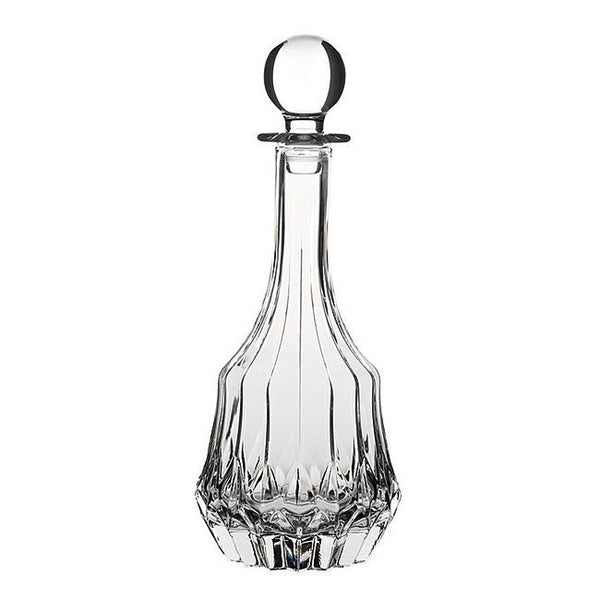Italian Glassmaking - The 1000 Year Old Journey of a World-Renowned Treasure
Glass. The very mention of it brings visions of delicate luxury. Humanity’s fascination with glass is as old as time itself, beginning with obsidian, the naturally occurring volcanic glass known since prehistoric times, and continuing today, in our love for all things made with the material. Of all the glass that is made in the world, some of the most beautiful comes from Italy, where glassmaking has been a speciality since the Middle Ages. And in the centuries that have passed since, the traditional art of Italian glassmaking has not lost its shine or reputation.

The Very Beginning of Glassmaking
The art of glassmaking is an ancient one, dating back to 4000 B.C. While its exact origin is unclear, the first people known to have used glass objects were the Mesopotamians and the Egyptians.
The technique of ancient glassmaking was revolutionized when the Syrians invented the blow pipe, which changed the way glass was produced, making it cheaper and faster. It was then that the art of glassmaking began to thrive, spreading from the Middle East to the rest of the world with the Roman Empire, who took it to Europe and other regions under their rule. But the knowledge of glassmaking disappeared in most of Europe when the Roman Empire collapsed, and the practice went back to being a speciality of the Middle Eastern countries.
 (Egyptian Glass Flask from ca.1539-1295 BCE; Image Source: asia.si.edu)
(Egyptian Glass Flask from ca.1539-1295 BCE; Image Source: asia.si.edu)
How Glass Came to Italy
It was only when trade opened between Italy and the Middle Eastern countries in the Middle Ages, that Europe got reacquainted with the techniques of making glass. This started around the 12th century in Venice, with the development of sheet glass, which led to the creation of the iconic stained-glass windows of the medieval age. By the time the Renaissance began, the area around Venice became the glassmaking centre of the Western world, it’s glassworkers having perfected the art of making fine objects with the material.
 (Stained Glass Window at the Milan Cathedral)
(Stained Glass Window at the Milan Cathedral)
The Creation of a Glass Island
In the year 1291, all glassmaking operations in Venice were moved by the Venetian Republic to the neighbouring island of Murano, as a caution against frequent fires. More importantly though, this move ensured the concentration of the production of this valued art to one closely guarded area. Murano became the source of some of the most beautiful glass objects in the world. The trade flourished so much that the glassworkers in Murano were prevented from leaving the island. But within Murano, they were well treated. The glass-masters of Murano were highly regarded and given sword-bearing privileges. Their daughters were even allowed to marry into noble families!
 (Engraving of a Renaissance Murano glass laboratory, with the Doge visiting; Image Source: Fundo Antiguo de la Universidad de Sevilla/flickr)
(Engraving of a Renaissance Murano glass laboratory, with the Doge visiting; Image Source: Fundo Antiguo de la Universidad de Sevilla/flickr)
 (Modern day Murano, Italy)
(Modern day Murano, Italy)
The Famed Murano Glass
Murano Glass was prized since the middle ages, and continues to be highly valuable even today. It became known for featuring colourful intricate designs. The term ‘Murano Glass’ would eventually become synonymous with a few specific types of glass that the Murano glassmakers specialised in working with. These include cristallo, a clear glass that was known for its transparency, lattimo, a type of white, milky glass that resembled porcelain and millefiori, a type of multicoloured glass with colourful patterns on the surface.
 (Top Left: Lattimo Vase, Image Source: lemonde.fr; Right: Cristallo Pitcher, Image Source: toledomuseum.org; Bottom Left: Millefiori Pitchers, Image Source: aspireauctions.com)
(Top Left: Lattimo Vase, Image Source: lemonde.fr; Right: Cristallo Pitcher, Image Source: toledomuseum.org; Bottom Left: Millefiori Pitchers, Image Source: aspireauctions.com)
Popular items made using Murano Glass include highly decorative sculptures, chandeliers, mirrors, vases and drinkware, typically handblown by skilled artisans, with intricate details often involving the use of gold and silver leaf.
 (Prancing Horse Sculpture in Murano Glass, Image Source: muranoglassgifts.com)
(Prancing Horse Sculpture in Murano Glass, Image Source: muranoglassgifts.com)
Crystal, The Other Italian Treasure
While most mentions of Italian glass lead us to think about Murano, the glassmaking tradition in Italy also developed in other regions, particularly in Tuscany. The glassmakers of Tuscany however, are mostly regarded for their crystal. Crystal is different from glass, in that it contains a certain percentage of lead that gives it a characteristic brilliance, clarity and durability. The crystal makers of Tuscany pride themselves on their high-quality crystal with the ideal 24% lead used in production. Tuscany is a significant contributor to the world’s crystal production, with 15% of all the world’s crystal being made in the region, particularly in an area called Colle Val d’Elsa, which has been producing crystal since the 15th century.
 (Crystal Decanter, Image Source: overstock.com)
(Crystal Decanter, Image Source: overstock.com)
Tradition Meets Evolution
The glassmaking industry in Italy continues to be active, with many factories and individual artisans still producing exquisite works of art. The glass workshops are run in the same way they were a thousand years ago, with the art mostly passing from one generation to the next. Even the techniques are mostly the same, with most things being made in the same methods that artisans mastered centuries ago, with little to no mechanical interventions.
 (Italian glass artist from Tuscany based workshop IVV Handmade, Image Source: artemest.com)
(Italian glass artist from Tuscany based workshop IVV Handmade, Image Source: artemest.com)
What makes glass from Italy so coveted even today, is the marriage between time-tested techniques and continuous evolution in design. The new generation glass-masters of Italy shatter the bounds of convention, presenting glass in innovative ways without compromising on quality. With their pathbreaking creativity and unmatched skill, we can be rest assured that Italian Glass will never cease to sparkle.
























































































